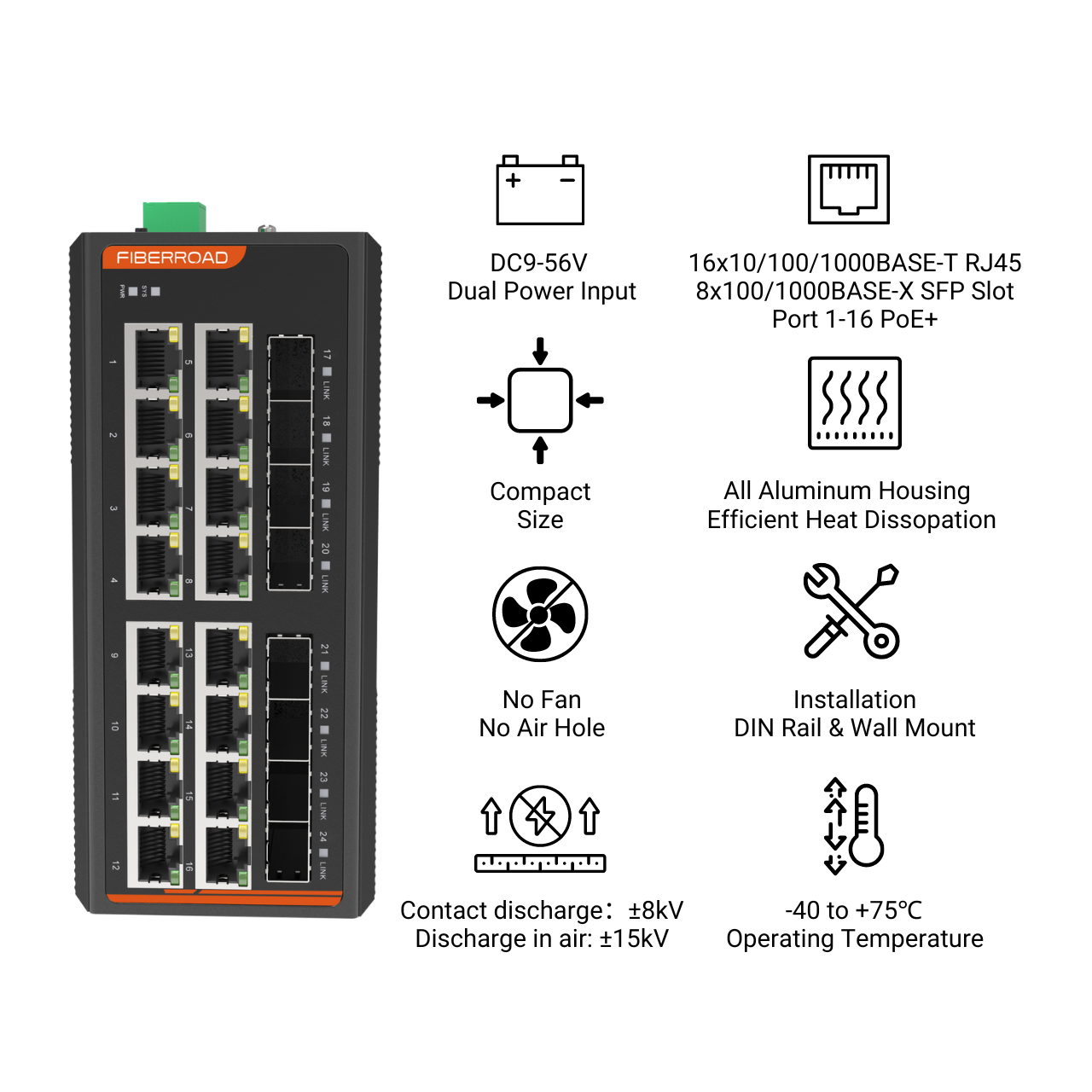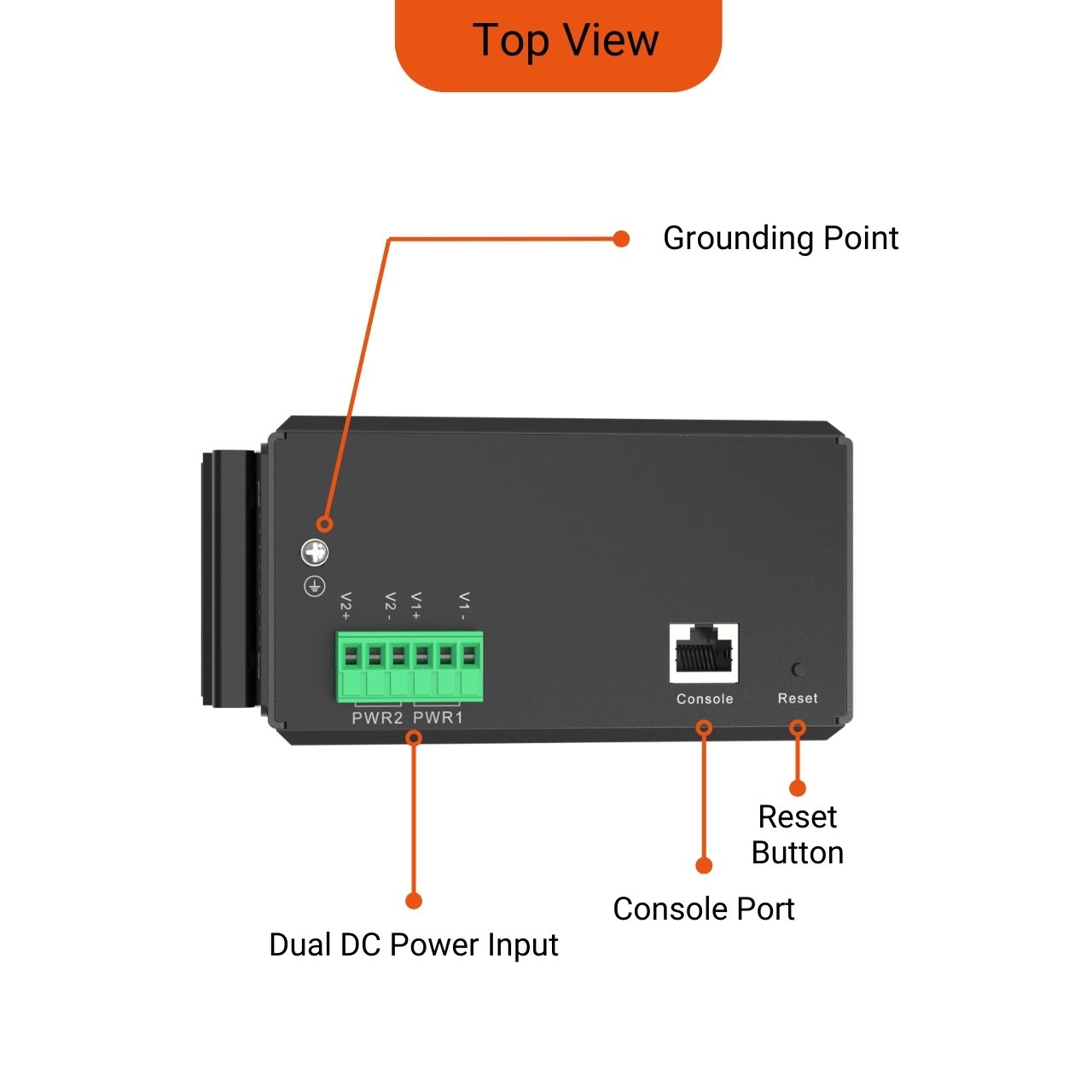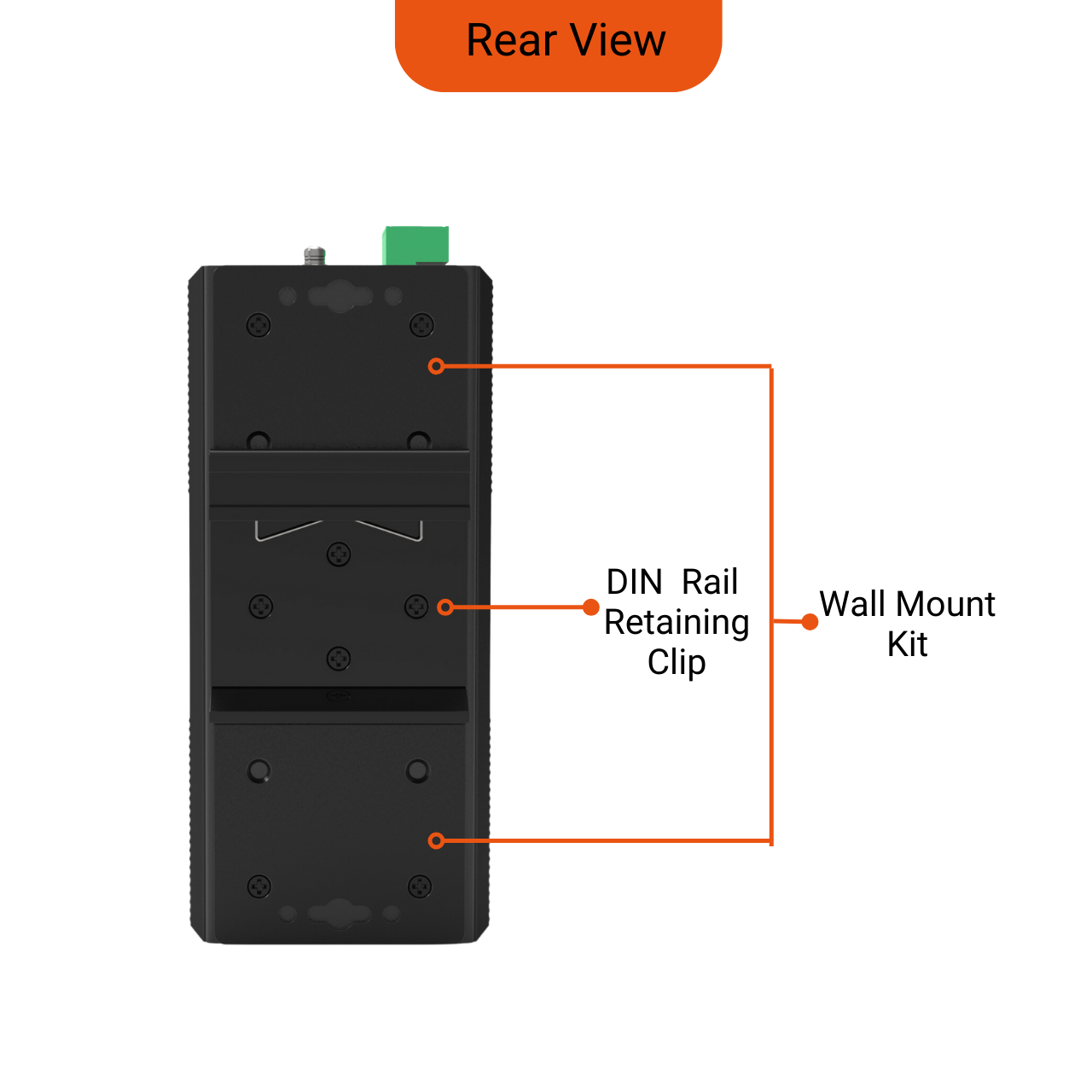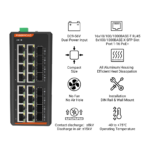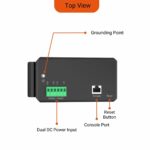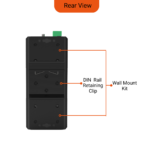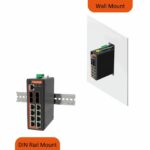Share This Product
Boosting Efficiency in Industrial Settings with Layer 2+ Managed PoE Switches
Layer 2+ Managed Industrial PoE Switches are a game-changer when it comes to enhancing network efficiency in industrial settings. These advanced switches offer a multitude of benefits making them ideal for demanding environments. IGMP snooping, QoS prioritization, and VLAN support ensure seamless communication within the network while minimizing latency and packet loss.

Navigating the Challenges of Industrial Networking
When it comes to operating in harsh environments, layer 2+ managed industrial switches offer a wide range of benefits that can greatly improve the efficiency and reliability of industrial networks when used in harsh environments. These switches are designed to withstand high temperatures, moisture, dust, vibrations, and electromagnetic interference found in industrial environments.
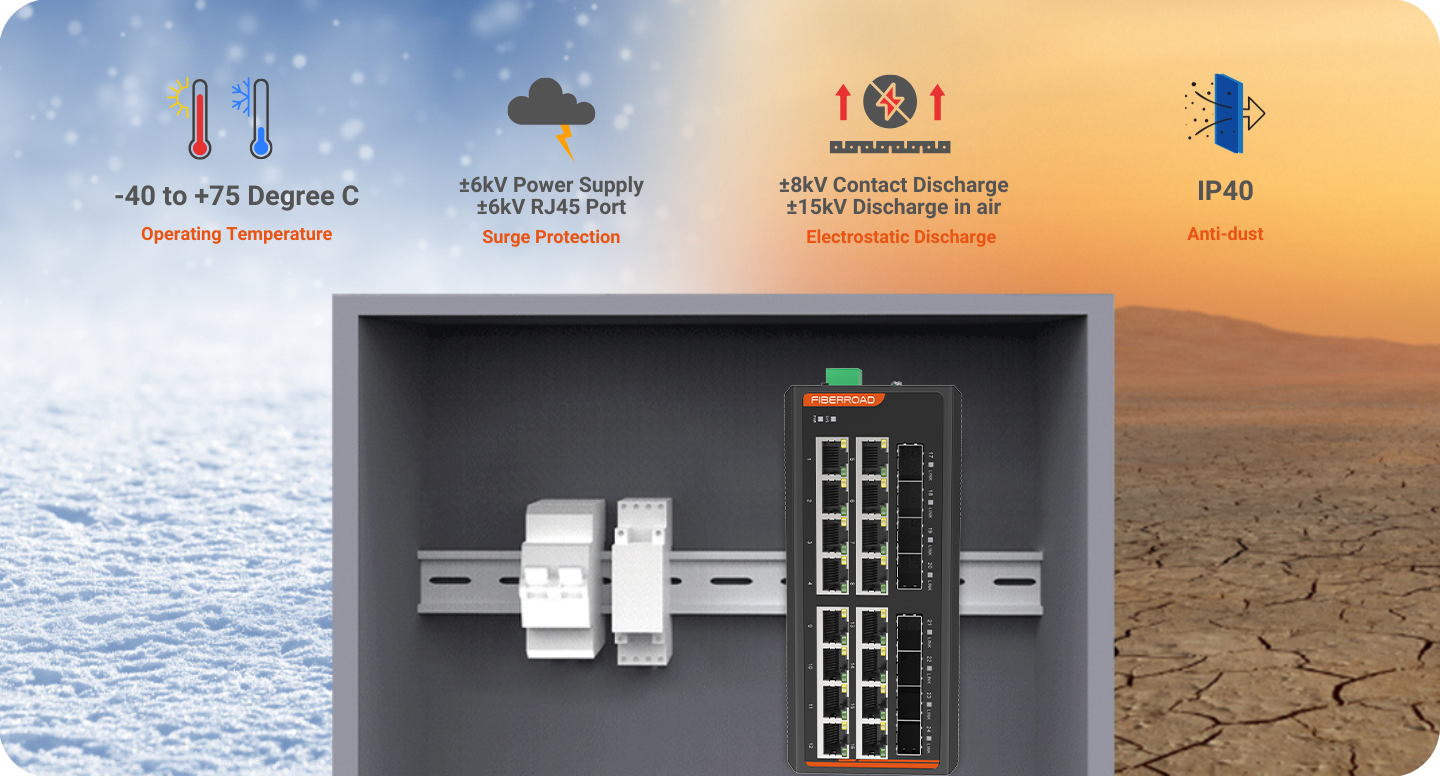
How Secure Network Connectivity is Revolutionizing the Industrial Landscape
In today’s rapidly evolving industrial landscape, the key to success lies in optimizing efficiency and productivity through secure network connectivity. This is where technologies like MSTP and ERPSv2 come into play, serving as crucial tools in achieving that goal. With MSTP, redundant paths are created within the network, ensuring seamless communication between devices even if one path experiences failure. This not only boosts reliability but also minimizes downtime, ultimately maximizing efficiency. Similarly, ERPSv2 excels in ring topologies by detecting faults rapidly and recovering from them in record time, further enhancing network resilience and ultimately leading to increased productivity. By harnessing these advanced technologies, businesses can effectively streamline their operations and stay ahead of the competition in today’s fast-paced industrial world.

MSTP

ERPSv2
PoE Schedule for Energy Savings
To contribute to energy conservation worldwide and environmental protection, the FR-7M3816P is capable of effectively controlling the power supply in addition to providing high power levels. It is a powerful tool for small and medium-sized businesses to save power and money by using the built-in “PoE schedule” function to enable or disable PoE power feeding for each PoE port at specified intervals.

PoE Power Management
You can configure the maximum power, percentage of PoE power to be reserved, PoE power alarm threshold, and maximum power on each interface depending on the quantity, type, and input voltage of the PoE-capable module. Power parameters can be set based on the requirements of PDs connected to a device to use PoE power effectively and ensure device stability.

Harnessing the Power of Console, Web, and SNMP Interfaces
The Layer 2+ Managed Industrial Ethernet Switch streamlines network management, utilizing console, web, and SNMP interfaces to offer a complete solution for overseeing and regulating the network infrastructure. The user-friendly web interface allows for effortless settings adjustment, real-time traffic monitoring, and prompt troubleshooting. By using the SNMP interface, users can seamlessly integrate with current network management systems, achieving comprehensive control over all connected devices. For individuals who prefer a more hands-on approach, the console interface provides direct access to advanced configuration choices, ensuring maximum flexibility. With these robust tools at your disposal, efficiently managing your industrial Ethernet network has never been as effortless or impactful.
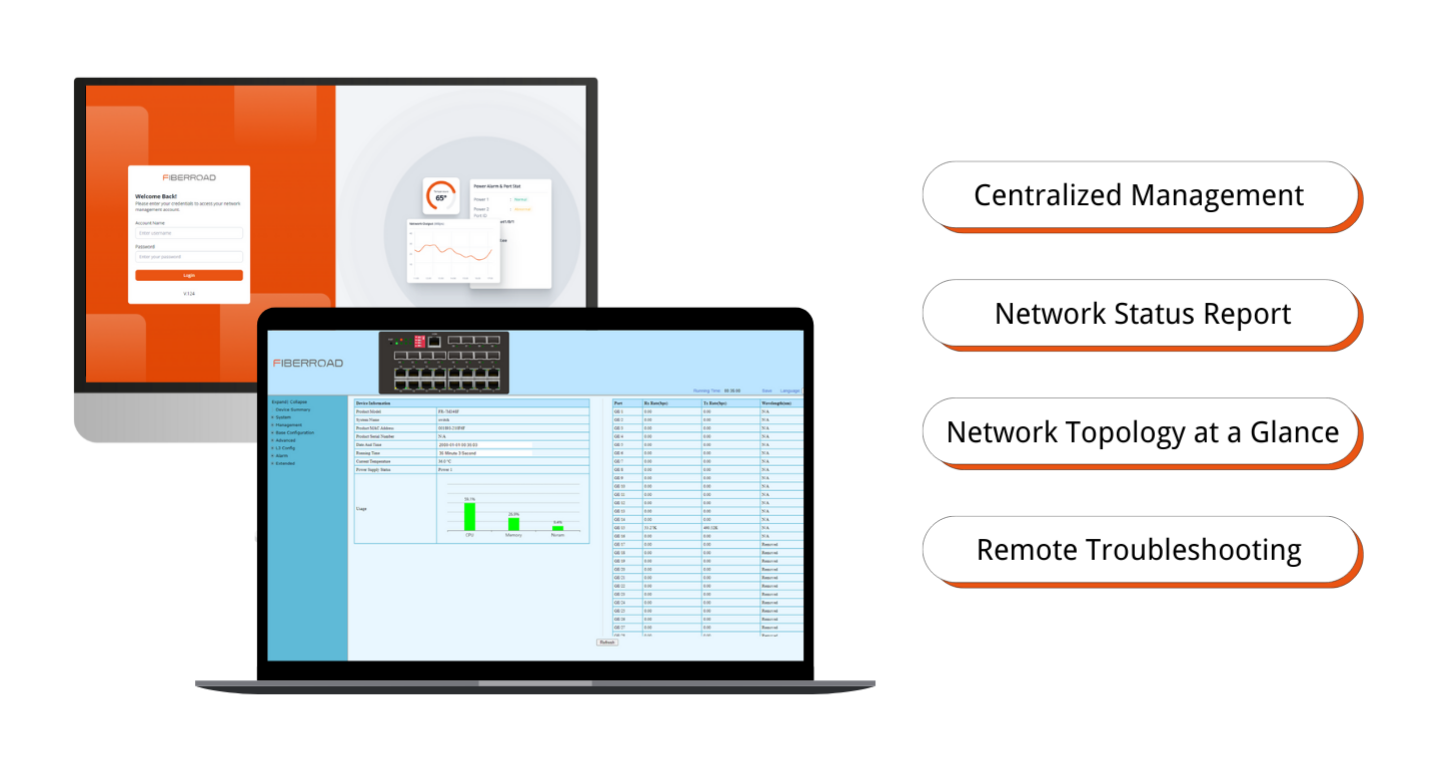
| Hardware Specifications | |||
| Product | FR-7M3816/A | FR-7M3816P | FR-7M3816BT |
| Copper Ports | 16×10/100/1000BASE-T RJ45 Auto-MDI/MDI-X (Port 1-16) | ||
| Fiber Ports | 8×100/1000BASE-X SFP Slots (Port 17-24) | ||
| Console | 1x RJ45-to-RS232 Serial Port(115200) | ||
| Connector | 1 removable 6-contact terminal blocks
Pin 1/3 for Power 1, Pin 4/6 for Power 2 |
||
| Alarm | One relay output for power failure, Alarm relay current carry ability: 1A@24V DC | ||
| RAM | 128Mbyte | ||
| FLASH | 32MByte | ||
| Reset Button | <5 sec: System Reboot; >10 sec: Factory Default | ||
| Surge Protection | ±6kV DC, ±4kV RJ45 | ±6kV DC, ±6kV RJ45 | |
| Enclosure | IP40 aluminum case | ||
| Installation | DIN-Rail and Wall-mount | ||
| Dimension | 160 x 132 x 70mm | ||
| Weight | 1240g(Bare weight), 1500g(With package) | ||
| Switching | |||
| Switch Architecture | Store-and-Forward | ||
| Switch Fabric | 56Gbps/non-blocking | ||
| Forwarding Rate | 35.71Mpps(64-byte packet size) | ||
| Packet Buffer Size | 4 Mbits | ||
| Maximum Packet Length | 10K bytes | ||
| MAC Address Table | 8K entries, automatic source address learning and aging | ||
| Flow Control | IEEE 802.3x pause frame for full duplex, Back pressure for half duplex | ||
| PoE & Power Supply | |||
| PoE Ports | \ | Port 1 to 16 IEEE802.3 af/at | Port 1 to 16 IEEE802.3af/at/bt |
| PoE Power Supply Type | \ | End-span | End-span |
| Power Supply Pin | \ | 1/2(+), 3/6(-) | 1/2(+), 3/6(-) or 4/5(+), 7/8(-) |
| Max Power Per Port | \ | 30W | 90W |
| Input Voltage | DC9-56V | DC48-56V | DC52-56V |
| PoE Power Budget | \ | 240W maximum
(Depending on power input) |
240W maximum
(Depending on power input) |
| Environmental | |||
| Operating Temperature | -40℃~75℃ (-40 to 167 ℉) | ||
| Storage Temperature | -40℃~85℃ (-40 to 185 ℉) | ||
| Operating Humidity | 5%~95% (non-condensing) | ||
| MTBF | 907,476 hours @ Telcordia SR-332 Standard | ||
| Heat Dissipation | 65 BTU/h (non-PoE mode)
1054 BTU/h (with 240W PoE load) |
||
| Cooling | Passive Cooling, Fanless Design | ||
| Noise Level | 0 dBA | ||








